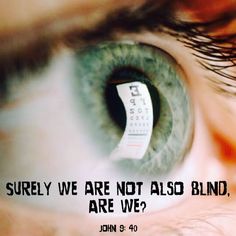Last Monday night, as I finished my post, I did what I have done every other week—looked over the list of Jesus’ miracles that I found on someone’s website and picked one for the following week so I could think about it. What caught my attention was now many blind people Jesus healed. Eight or nine, depending on whether you think Mark’s story about Jesus healing a blind man as he entered Jericho and Luke telling almost the same story but saying Jesus was leaving Jericho are both talking about the same blind man.
Either Tuesday or Wednesday I realized I had chosen to think about Jesus healing blind people on a Monday that would lie between my two cataract repair surgeries—one last Thursday, the other coming up later this week. They did my left eye first because it was the worst. Almost immediately after coming out of the surgery center I could see better, even while wearing the sink strainer they used for an eye patch. It was also on Tuesday morning I found that John Berger, one of my favorite writers, had a small book called Cataract, which I promptly ordered and it arrived on Friday. He begins,
Cataract from Greek, kataraktes, meaning waterfall or portcullis, an obstruction that descends from above. Portcullis in front of left eye removed. On the right eye the cataract remains. (8)
Even he was tracking me.
Mark tells the story of a blind man who was brought to Jesus in the town of Bethsaida. (Mark 8:22-30). As with all of Mark’s gospel, the encounter between the two men happens in the middle of everything, in the context of interruptions, at least from Jesus’ standpoint. The Voice translation tells the story this way:
When they came into Bethsaida, a group brought a blind man to Jesus, and they begged Him to touch the man and heal him. So Jesus guided the man out of the village, away from the crowd; and He spat on the man’s eyes and touched them.
Jesus: What do you see?
Blind Man (opening his eyes): I see people, but they look like trees—walking trees.
Jesus touched his eyes again; and when the man looked up, he could see everything clearly.
Jesus sent him away to his house.
Jesus (to the healed man): Don’t go into town yet. [And don’t tell anybody in town what happened here.]
As far as I can tell, this was Jesus’ only two-step miracle. The guy comes up, Jesus spits on his eyes (there might have been a more delicate way to do that), and then asks what he sees. And the man says, “People are walking around like trees walking around.”
John tells a story about a blind man that begins with the disciples asking who had sinned that the poor man had been born blind. They wanted to know the back story—or, I should say, they assumed they did; they just wanted to know who to blame. Other than that, we don’t know much about who any of these people were before Jesus healed them. When the man in Bethsaida said people looked like walking trees, I guessed he must have been able to see at some point. How else would he have known to make the analogy? He once had seen, and then he was blind. Perhaps there was an accident. Or he had a disease.
Jesus listened and then touched his eyes, rather than spit again. Mark says the man “looked intently and his sight was restored.” (NRSV) It was a brand new day.
John Berger says the cataract surgery not only improves the detail we can see, but also how we see color and how we see distance. Life has more space.
I become more aware of the air, the space, between things, because that space is full of light like a tumbler can be full of water. With cataracts, wherever you are, you are in a certain sense indoors. (22)
Friday morning I sat in my window seat at The Marketplace, my home office on many days, and looked across the street at the hundred year-old oak that towers over the corner of the Guilford Green. I could see leaves on the top of the tree. Individual. Green. Leaves. And the clouds behind them seemed to go on forever. I have worn glasses since I was ten. I have seen poorly—even with lenses—for a long, long, time. I did know to expect I would ever have a morning when I could see the leaves at the top of the tree, when I could let my eyes take in the deep blue sky.
I’ve told everyone who will listen. I have no idea how the man could have kept quiet as Jesus asked. Even if he went straight home, he would have seen what it looked like to be there, he would have been able to look in his wife’s eyes, to see his children smile. He had a chance to see, if you will, where he belonged. Berger, once more,
The removal of cataracts is comparable with the removal of a particular form of forgetfulness. Your eyes begin to re-remember first times. And it is in this sense that what they experience after the intervention resembles a kind of visual renaissance. (44)
Renaissance. Born again. I can see clearly now. Well, I will be able to after Thursday.
Peace,
Milton
Next week: Some other blind folks . . .







Oh, God! You leaped eyes-first into Jesus’ story. He called your name. You didn’t think. You jumped!
”Milty in Wonderland!
Walking trees!
So happy with my new lenses from 2015. Sorry I did not make it to Guilford on this trip. Until next time… Mike
One of the greatest delights of being raised up with hymns and becoming a church musician is how a hymn comes to testify to an event..such as cataract surgery a year ago. Currently am at mystical Caddo Lake in deep east Texas, really seeing its magnificent cypress trees, its families of cypress knees, and , alas, even the invasive salvinia. “Open my eyes that I may see glimpses of truth thou hast for me…illumine me…”.